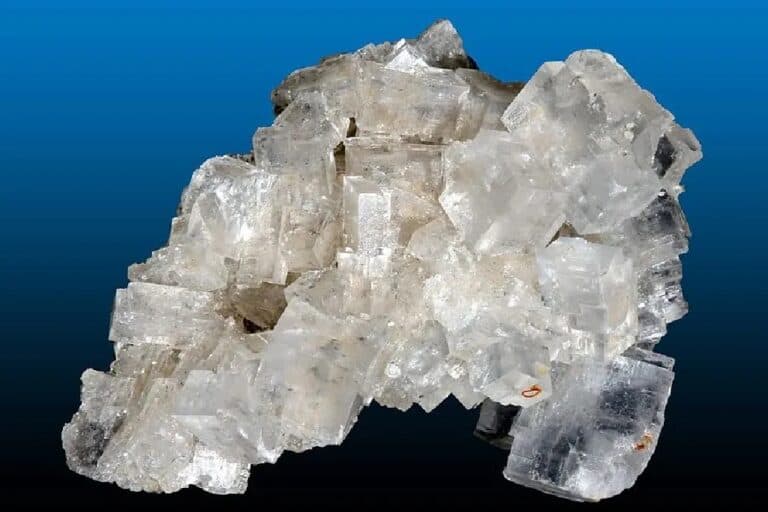How Much Does a Quarry Business Owner Make? Is It a Profitable Business?

Have you ever wondered about the financial prospects of owning a quarry business? Perhaps you’ve heard stories of entrepreneurs striking it rich in this industry, or maybe you’re considering investing your hard-earned money into a quarry venture.
Whatever the case may be, diving into the world of quarry businesses can be both fascinating and potentially lucrative. In this article, we will explore the income potential and profitability that come with being a quarry business owner.
Introduction to a Quarry Business
Firstly, let’s establish what exactly constitutes a quarry business. At its core, a quarry is an excavation site typically located in areas abundant with natural resources such as rocks, sand, gravel, or limestone. Quarry businesses often extract these materials for use in construction projects like roads, buildings, and infrastructure development.
With an increasing demand for construction materials worldwide, quarries have become integral to supporting urbanization and economic growth.
So how do quarries operate? Typically, operators first obtain all necessary permits and licenses from local authorities and environmental agencies to ensure compliance with regulations pertaining to land use and resource extraction practices, I.e.: sustainability concerns. Then, they strategically select areas for mining activities based on geological surveys indicating high-quality deposits.
Large-scale machinery such as excavators and haul trucks is employed to remove overburden (the top layer covering valuable resources) before extracting the desired minerals beneath.
Now that we have laid down some foundational knowledge about what a quarry business entails, let us delve deeper into understanding just how profitable this industry can truly be. Stay tuned!
Factors Influencing the Profitability of a Quarry Business
1. Initial Investment Cost
One of the primary factors that determines the profitability of a quarry business is the initial investment required to start and set up operations. This includes acquiring suitable land for excavation, purchasing heavy machinery and equipment, obtaining necessary permits and licenses, and setting up infrastructure such as roads and storage facilities.
The total cost can vary significantly depending on location, size of operation, and local regulations. You, as a potential owner or investor, must do thorough feasibility studies to get a good idea of these costs.
2. Operating Expenses
Once a quarry business is up and running, it incurs various operating expenses that directly impact profitability. These expenses include labor costs (for skilled operators as well as maintenance staff), utility bills (such as electricity or water charges), fuel costs for machinery, repair/ maintenance costs for equipment, insurance fees, etc.
Managing these ongoing expenditures diligently becomes essential in order for you to maintain healthy profit margins.
3. Market Demand for Products
The profitability of a quarry business heavily relies on market demand for its products in the construction industry. Quarry owners must stay current with construction trends and building activities in their target region(s).
Factors like population growth rates, infrastructure development plans by governments or private entities, and overall economic conditions affecting construction spending all play significant roles in determining market demand trends.

Potential Revenue Streams for Quarry Businesses
1. Sale of Raw Materials (Stone Aggregates) to Contractors
One of the primary revenue streams for quarry businesses is the sale of raw materials, specifically stone aggregates, to contractors. Stone aggregates are widely used in construction projects such as roads, bridges, buildings, and other infrastructure developments.
Contractors rely on quarries to provide them with a consistent supply of high-quality stone aggregates for their projects. This demand creates a lucrative market opportunity for quarry business owners.
The revenue generated from selling stone aggregates can vary depending on factors like location, size of the quarry operation, and market demand. However, it’s not uncommon for quarry businesses to generate substantial income through this revenue stream alone.
2. Secondary Markets, Such as Landscaping Companies or Cement Producers
In addition to supplying contractors with raw materials, quarry businesses can explore secondary markets that offer further profit potential. For instance, landscaping companies often require crushed stones and gravel for various landscaping projects like driveways or garden paths.
Quarry owners can get extra money from these companies by building relationships with them. You must advertise yourself as a reliable supplier to the landscaping industry.
Moreover, cement producers also represent an important market segment that relies heavily on quarries for limestone extraction, a key ingredient in cement production. If quarries are placed near cement plants in a smart way, they can get long-term contracts with these companies, which means they can keep getting paid and help meet the construction needs of the region.
Related: Is Separating Sand from Gravel a Physical Change or a Chemical Change?
Understanding Profit Margins in the Quarry Industry
Profit margins play a crucial role in determining the financial success of any business, and the quarry industry is no exception. The profit margin represents the percentage of revenue that remains as net income after deducting all expenses.
It provides a clear measure of how efficiently a quarry operation is generating profits from its operations.
Calculation Methods for Determining Profit Margins
To calculate profit margins, as a quarry business owner, you must determine gross profit by subtracting direct costs such as raw materials, labor costs, maintenance expenses, and lease payments from their total revenue. Then you need to calculate their operating expenses and subtract them from the gross profit to arrive at net income.
Industry Benchmarks and Average Profit Margin Ranges
While data on specific quarry businesses’ profitability may be limited due to varied operating models and regional factors, market research can provide some insight into average profit margin ranges within this industry. According to industry benchmarks, quarry businesses typically achieve gross profit margins ranging between 30% and 50%.
However, it’s important to note that individual business performance can vary significantly depending on various factors such as market demand, operational efficiency, geographic location, and competitive landscape.
It’s also worth considering additional factors affecting profitability beyond the basic calculation methods mentioned above. For example, offering a wider range of products or looking into new markets could bring in more money and make the business more profitable overall.
On the other hand, rising operational costs or changes in governmental regulations might negatively impact profit margins. As with any business, people who want to start a quarry business need to carefully look at each situation in order to get a good idea of how profitable it could be.
Case Studies: Profitable Quarry Businesses
In examining the profitability of owning a quarry business, it can be helpful to look at case studies of real-life ventures that have achieved high levels of success. These examples provide valuable insights into the potential earnings and overall profitability of this industry.
Let’s take a closer look at two successful quarry businesses and what sets them apart from their competitors.
One such example is Quarry Co., located in Ohio, USA, which has been operating for over two decades. What sets Quarry Co. apart is their strategic focus on targeting niche markets with high-demand products.
Instead of solely relying on traditional construction projects, they have identified specific sectors where they can supply unique materials or services. By tapping into these specialized markets, they have not only established themselves as experts but also created a sustainable revenue stream that continues to drive profits year after year.
Another noteworthy example is StoneWorks Ltd., known for its innovative approach to technology integration within the quarrying process. By harnessing cutting-edge machinery and software solutions, StoneWorks Ltd. has increased efficiency and reduced operational costs significantly compared to its competitors. This optimization not only enhances productivity but also maximizes profit margins by minimizing waste and maximizing output.
Both Quarry Co. and StoneWorks Ltd.’s success stories highlight the importance of market differentiation and technological advancements within the quarrying industry as key factors driving profitability.
Rather than simply becoming another player amidst fierce competition, these companies strategically position themselves as leaders in specialized niches while seeking out ways to streamline operations through innovation.
By analyzing these case studies and understanding how successful quarry businesses operate differently from others, aspiring entrepreneurs or potential investors can gain valuable insights into achieving high levels of profitability within the industry undertaking thorough planning,integrating modern technologies,and identifying untapped opportunities
Challenges and Risks Owning a Quarry Business
The challenges and risks associated with owning a quarry business can have a significant impact on its profitability. One of the key challenges is securing a consistent supply of raw materials.
Quarries rely heavily on access to high volumes of suitable rock, gravel, or other aggregates for their operations. Factors such as geology, location, and competition can affect the availability and quality of these materials.
Another challenge is navigating environmental regulations and permits. Quarrying involves altering natural landscapes by clearing vegetation, excavating soil, and potentially disrupting ecosystems. Obtaining necessary permits from local authorities may require time-consuming processes and adherence to strict environmental guidelines.
Additionally, market demand fluctuations can pose risks to profitability in the quarry industry. The construction sector plays a major role in driving demand for quarried aggregate products like sand, gravel, and crushed stone. Economic downturns or shifts in construction activity levels can lead to decreased demand for these materials.
Mitigating these challenges requires careful planning and management strategies that balance resource sustainability with financial viability. Proactive measures such as diversifying product offerings, establishing long-term contracts with customers or suppliers, implementing sustainable practices to minimize environmental impacts, and conducting thorough market research before entering new areas are all ways businesses aim to address potential risks while pursuing profitability in the quarry industry.
Strategies for Maximizing Profits in the Field
Efficient Operations Management
One of the key factors in maximizing profits in a quarry business is implementing efficient operations management. This encompasses various aspects, such as optimizing production processes, reducing downtime, and minimizing operational costs. By streamlining operations and ensuring smooth workflows, quarry owners can increase productivity and reduce waste, ultimately leading to higher profits.
Diversification through Product Expansion
Another strategy that can contribute to the profitability of a quarry business is diversifying its product offerings. While most quarries primarily focus on extracting and selling one type of material, like limestone or granite, expanding into additional products can open up new revenue streams. For instance, producing crushed stone for road construction or manufacturing decorative stones for landscaping purposes can attract different customer segments and provide opportunities for growth.
Moreover, diversification allows businesses to mitigate risks associated with fluctuations in demand or pricing within a specific market segment. By adding complementary products to their portfolio, quarry owners can potentially increase sales volume and capture different markets while strengthening their overall position in the industry.
To successfully implement product expansion strategies, thorough market research is crucial. Understanding customer preferences, emerging trends, and identifying unmet needs will help guide decision-making when choosing which new products to introduce into the business model.
Earnings Potential from Operating a Profitable Quarrying Venture
While the earnings potential of owning and operating a quarry business can vary depending on various factors such as location, size of the operation, market demand, and operational efficiency, it is generally regarded as a potentially lucrative venture. Quarry businesses have the opportunity to generate substantial income through various revenue streams.
One primary source of revenue for quarry businesses is the sale of extracted materials. Whether it’s gravel, sand, limestone, or other natural resources, these materials are in high demand for construction projects and infrastructure development. Profitability can be influenced by pricing strategies that align with market rates while ensuring sustainability for long-term growth.
Apart from material sales, supplementary services can also contribute significantly to revenues. These include crushing services for contractors who may not have their own processing equipment or offering transportation solutions to customers who need their purchased materials delivered directly to construction sites. By diversifying revenue streams and providing value-added services like these, quarry owners have the potential to further boost their profitability.
Conclusion
In conclusion, owning and operating a profitable quarrying venture has promising earning potential due to its alignment with constant industry demand and diverse revenue sources. With careful strategic planning and efficient operations management in place, including cost-effective extraction methods and streamlined logistics processes- achieving profitability becomes realistic in this industry sector
You, as a potential quarry business owner, must emphasize efficient operations management practices such as optimizing production processes and reducing operational costs while also considering diversification through product expansion based on careful market analysis. Quarry business owners can work towards maximizing profits and ensuring long-term sustainability even in highly competitive environments.






